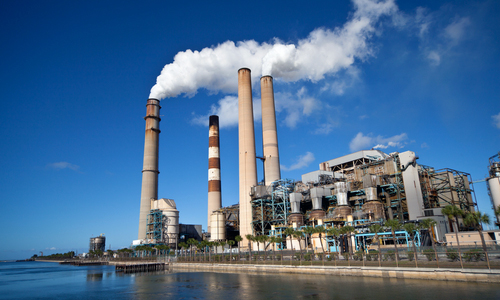

Geology is driving up the price of Appalachian coal. But Powder River Basin coal competes unfairly, because the owner, U.S. government, gives it away. In spite of lawsuits the Department of the Interior refuses to use competitive bidding in the Basin, and according to the Department of the Interior’s Inspector General, the government sells the coal for much less than fair market value. This has cost the taxpayers tens of billions of dollars so far—but it has also deprived coal miners in Appalachia of market and income.
3. States overly dependent on coal don’t get lower electricity bills in exchange – coal fired power is no longer necessarily cheap.
If you look at the most coal dependent states, some of them have cheap electric bills—New Mexico, Wyoming and Utah in the West. But so do some of the least coal dependent states—Idaho, with no power from coal at all, California, Maine, Washington and the District of Columbia. The most coal dependent state of all, West Virginia, ranks 20th, while the second most dependent, Kentucky, is 32d in electricity affordability.
Iowa, with the nation’s highest percent of renewable electrons has cheaper electric bills than either of the two coal leaders. Those states whose coal power is cheap are almost all using locally strip-mined coal under sweetheart leases with either the Federal Government or Indian nations—the rest of us subsidize their electric bills.
4. The costs of cleaning up carbon pollution—the way Obama proposes to do it—will be barely measurable by electricity consumers.
What EPA Administrator Gina McCarthy has proposed is a rule which requires each state to reach a CO2 emission reduction target based on its opportunities—but to craft as clever and cheap a strategy for doing so as it can devise. McCarthy knows that every state has lots of waste it can cut—and in doing so, make meeting the carbon goals EPA has set virtually free
We’ve seen an advance version of how this works in Omaha. The Omaha Public Power District agreed, under pressure from its owner-customers to shut down three units of its dirtiest coal plant, invest in efficiency and renewables, clean up and eventually convert its remaining coal boilers to gas: net impact, “over the next 20 years, OPPD expects its plan to reduce emissions of nitrous oxides by an average of 74 percent, sulfur dioxide by an average of 68 percent, mercury 85 percent and carbon by 49 percent…” Total cost? “A minimal effect on customer rates, ranging from zero to 2 percent over a 20-year period.” This plan, adopted voluntarily, cuts twice as much carbon pollution as EPA is requiring of Nebraska!
Compare this affordability story with the results when the Prairie State coal fired energy campus opened two years ago in Southern Illinois: massive cost-overruns over a three state region, kilowatt hour charges 50 percent higher than market, and huge negative impacts on local businesses.
5. Obama was ordered by the U.S. Supreme Court to regulate carbon pollution. The lawsuits and challenges being planned by Obama’s opponents won’t stop the clean-up; instead they would actually increase electricity costs far more. Instead of lawsuits to limit utility options, the U.S. needs a broader—not a narrower—plan to manage the evolution to clean electricity and power.
Remember, Obama issued this regulation after states sued EPA and got a Supreme Court ruling that, “If carbon pollution changes the climate EPA must regulate it.” Not may, must—that’s what the Clean Air Act says.
You may hear that those fighting Obama want to keep power rates low. No way. They don’t object to the rule EPA drafted—in fact after EPA released it they had to redo their legal pleadings because EPA didn’t come up with a rigid set of requirements they expected. They object to the fact that EPA did what the Supreme Court ordered, period. They would have sued over any version of the rule.
Their new legal theories, therefore, are going to complain about the very flexibility given the states, claiming it is not allowed under the Clean Air Act. (Don’t laugh—that is exactly the legal argument underlying the pending House Republican Obamacare lawsuit—that Obama ought to have been more rigid and punitive in the way he implemented the Affordable Care Act).
But the Supreme Court just again upheld EPA’s obligation to regulate. So if the Courts go along with the opponents of the Clean Power Rule, and throw out the flexibility they lament, the result will be the same carbon clean up at a higher, not a lower cost. That is actually what the Koch’s and Big Coal want—they want to make the price of carbon clean up as high as possible so the public is reluctant to ask for more.
What we really need is a broader power sector reform program—because the Clean Power Rule is a small chunk of the change sweeping America’s utilities. Workers and communities who relied on the old, fossil fuel, centralized utility model need to be part of the decentralized, clean energy future—rather than being left behind, as a rigid approach risks. Jobs, school funding, health care and pension plans, community vitality and futures are all at stake—and in the ideological warfare being launched this week against the Clean Power Rule, we are all in danger of losing sight of the big picture.
You Might Also Like
10 Biggest Threats to Human Existence
The Truth About Natural Gas: A ‘Green’ Bridge to Hell
Big Polluters Cry Wolf Over EPA Plan to Fight Climate Change and Protect Human Health

 233k
233k  41k
41k  Subscribe
Subscribe 